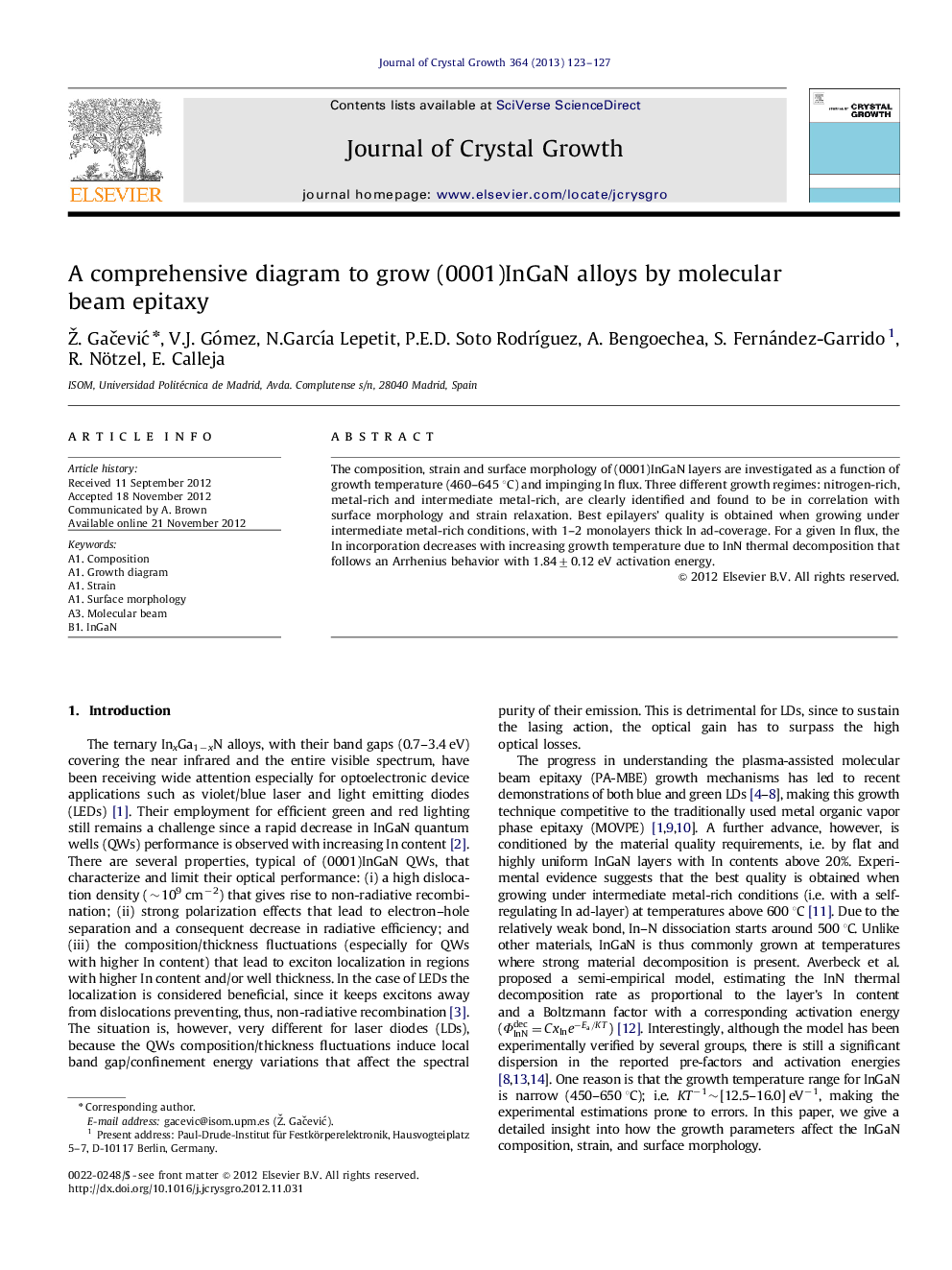| Article ID | Journal | Published Year | Pages | File Type |
|---|---|---|---|---|
| 1791189 | Journal of Crystal Growth | 2013 | 5 Pages |
The composition, strain and surface morphology of (0001)InGaN layers are investigated as a function of growth temperature (460–645 °C) and impinging In flux. Three different growth regimes: nitrogen-rich, metal-rich and intermediate metal-rich, are clearly identified and found to be in correlation with surface morphology and strain relaxation. Best epilayers’ quality is obtained when growing under intermediate metal-rich conditions, with 1–2 monolayers thick In ad-coverage. For a given In flux, the In incorporation decreases with increasing growth temperature due to InN thermal decomposition that follows an Arrhenius behavior with 1.84±0.12 eV activation energy.
► Study of In incorporation as functions of growth temperature and impinging In flux. ► InGaN surface morphology strongly correlated to the growth regime. ► InGaN growth diagram constructed. Growth regimes’ borders analytically determined. ► InGaN epilayer relaxation rate dependent on growth regime. ► Difference in In incorporation into InAlN and InGaN explained by their decomposition parameters.
